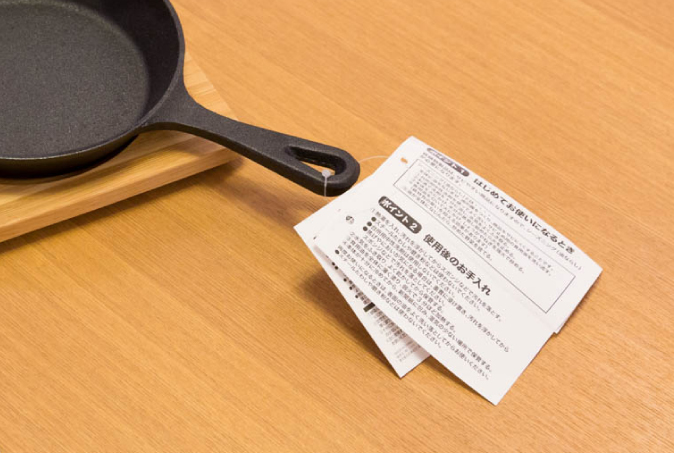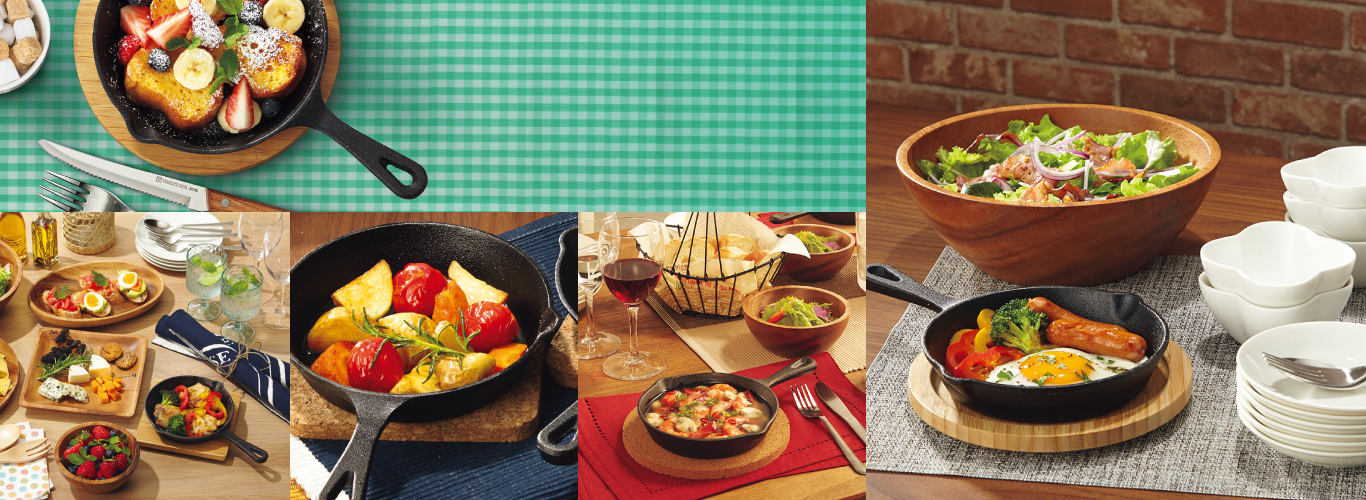
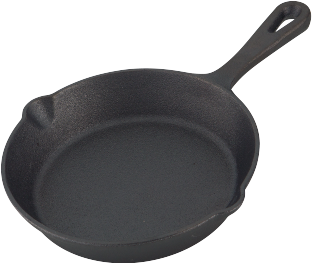
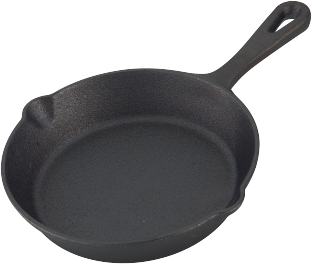
With its online popularity as its trigger,
NITORI’s Skillet enjoyed a boom,
capturing the hearts of consumers.
We will disclose a secret story from its development
to the establishment of a mass production system.
The Skillet became popular on the Internet and has created a boom through word of mouth. “Since it heats up quickly and cools down slowly it is possible to cook delicious food,” some say. “The Skillet can be used as a dish, and the table looks stylish,” say others. Its nickname is Nitoski. Over 1 million units have been sold. How was this product created?
 DevelopmentSetting a low price that exceeds customers’ expectations
DevelopmentSetting a low price that exceeds customers’ expectations
A surprising number of products are appealing, but have failed to penetrate the market due to their price. Conducting a study of those products that could become popular and providing them at lower prices so that customers can buy them casually is a way to providing the foundation of prosperous home living, which NITORI proposes. The skillet is a good example.
A customer has stated, “I want to buy steak plates.” In response to this comment from a customer, we started to consider providing a new product. We thought about developing skillets instead of steak plates because we thought skillets would be better received by households since their uses are not limited. We considered reasonable prices. Skillets sold for a few thousand yen at department stores, but whereas once skillets had attracted attention as “hundred ski,” they were no longer being sold at hundred-yen shops. Provided with this information, we started to develop skillets, aiming to provide them for one coin, or 500 yen, a price we believed would exceed customers’ expectations.
The most appealing feature of the skillet is that it is made of cast iron, a thermally conducting material. We had little experience in selling cast-iron products, and had difficulty finding manufacturers and difficulty with quality control. However, we were able to succeed, taking advantage of the manufacturing network that we have developed abroad over many years, a strength that our competitors did not have.
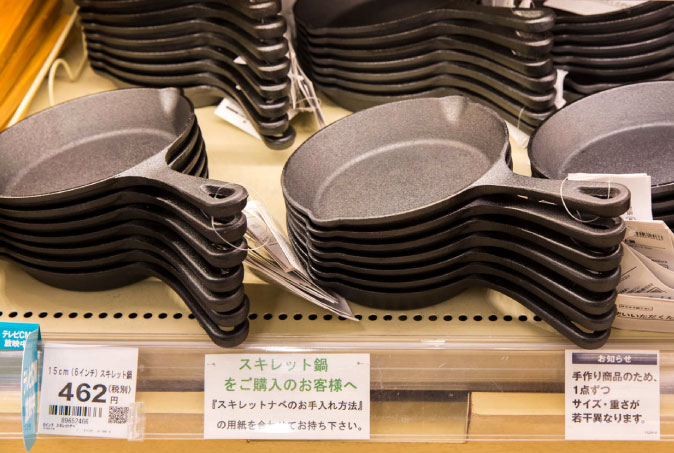
 Mass productionSkillets became extremely popular over the Internet and by word of mouth.
Mass productionSkillets became extremely popular over the Internet and by word of mouth.
Internally, there were arguments for and against the sale of skillets. A few weeks after they were sold on a trial basis, however, many messages about our skillets were posted with photos. “Making your table stylish using Nitoski,” some messages said. We were swamped with orders. We assume that the reasons for this are the low price, which enabled consumers to try the product, and because a new way of using skillets was becoming popular: buying two skillets and using one as a lid. As the saying goes, a product that becomes known by its pet name is a hit. Many stores sold out.
To respond to the boom, which had developed faster than expected, we urgently worked to create a mass production system. However, we faced a tough situation. A great deal of the skillet manufacturing process is done by hand, and facilities that manufacture cast iron are limited. To deliver products as quickly as possible, we gathered information from staff members overseas and experienced buyers to find foundries that were able to produce cast iron. We shared expertise and quality standards with the foundries that we found and introduced semi-automated production lines. Thanks to these efforts we were able to build a supply system to meet demand in a few months.
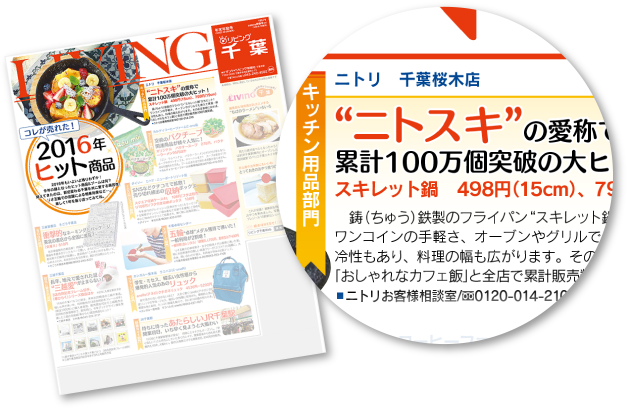
 Proposing how to use skilletsCommunicating the pleasure of using skills for years to customers
Proposing how to use skilletsCommunicating the pleasure of using skills for years to customers
Since skillets are made of cast iron, unlike fluorine coated frying pans, seasoning is required before and after use. For people accustomed to using skillets, “cultivating” skillets through repeated seasoning is a pleasure, and many users communicated the pleasure on video sharing websites. Meanwhile, customers using skillets for the first time reported that ingredients were burned and that skillets tended to rust.
In response, we revised the instruction booklet, making it more detailed so that customers who were using cast-iron pans for the first time could use skillets correctly and with ease. Our initiatives helped expand the boom, and the skillet became our first item to be listed in Nikkei Trendy’s top 100 hit products.
Providing a comfortable lifestyle through products in addition to the value of the products themselves is also a way to achieve “Offering the Unexpected.”
